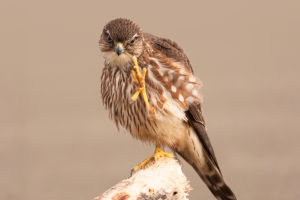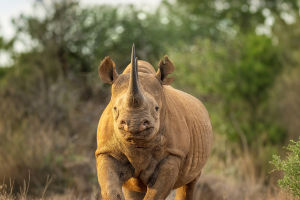When we think of speed, the first animal that likely comes to mind is the cheetah (Acinonyx jubatus). Known for its ability to sprint at incredible speeds, the cheetah holds the title of the fastest land animal, capable of reaching speeds up to 70 miles per hour in short bursts.
But beyond its speed, this magnificent creature is a symbol of agility, grace, and endurance in the animal kingdom. In this article, we’ll take a closer look at the cheetah, exploring its unique physical features, behavior, habitat, and conservation challenges.
Physical Features
The cheetah’s sleek, aerodynamic body is designed for speed. Its long, muscular legs, narrow waist, and flexible spine allow it to stretch its body out in mid-stride, maximizing its running efficiency. Its small collarbones and large nasal passages are further adaptations that reduce air resistance and enhance breathing during high-speed chases.
One of the cheetah’s most distinguishing features is its black tear stripes that run from the inner corners of its eyes down to its mouth. These stripes help reduce the sun’s glare, improving its vision while hunting during the day. Their large, rounded eyes provide excellent eyesight, crucial for spotting prey from afar.
Habitat and Range
Cheetahs primarily inhabit open grasslands, savannas, and semi-desert regions across sub-Saharan Africa, though a small population of Asiatic cheetahs can still be found in parts of Western Asia. These areas provide the wide, open spaces that cheetahs need to hunt and run. Unlike other big cats, cheetahs are not as comfortable in thick forests or dense jungles due to their need for speed and visibility.
While their range in Africa is extensive, cheetah populations are fragmented and often found in isolated pockets, which can create challenges for their survival and breeding. The Asiatic cheetah, in particular, is critically endangered, with fewer than 50 individuals remaining in the wild.
Hunting and Diet
Cheetahs are specialized hunters, relying on their exceptional speed to catch prey rather than stalking or ambushing like other big cats. Their preferred prey includes small to medium-sized ungulates such as gazelles, impalas, and springboks. The cheetah’s hunting strategy involves a high-speed chase over a short distance—usually 200 to 300 meters—where it accelerates rapidly to catch up with and overtake its prey.
Once the cheetah catches its prey, it uses its powerful jaws to deliver a suffocating bite to the throat. However, due to its lack of the raw strength of larger cats like lions or leopards, a cheetah's hunt often requires it to be quick and efficient. After a chase, cheetahs are often vulnerable to scavengers like lions or hyenas, who may steal their prey.
Reproduction and Lifespan
Cheetah reproduction is fascinating but challenging. Female cheetahs typically give birth to 3 to 5 cubs, and the process of raising them is tough. Cheetah cubs are born with a mottled coat, which helps them blend into their surroundings and avoid predators in their early weeks. The mother is responsible for raising the cubs alone, as male cheetahs usually do not help in raising offspring.
Cheetah cubs face numerous threats, from predators like lions to starvation if food is scarce. However, those that survive to adulthood are usually well-equipped to fend for themselves. Cheetahs generally have a lifespan of 10 to 12 years in the wild, although they can live longer in captivity.
Conservation Status and Challenges
Cheetah populations are facing several significant threats. Habitat loss due to human encroachment, agricultural expansion, and urbanization has severely reduced their range. Additionally, human-wildlife conflict, particularly with farmers who see cheetahs as a threat to livestock, has led to the killing of many individuals.
Poaching for the illegal pet trade also affects cheetah populations, as they are captured and sold, especially in the Middle East. Furthermore, cheetah populations are genetically vulnerable due to a lack of genetic diversity, which makes them more susceptible to diseases and other environmental stressors.
Currently, cheetahs are classified as vulnerable by the International Union for Conservation of Nature (IUCN), with an estimated 7,000 to 10,000 individuals left in the wild. Conservation efforts are underway to protect their habitats, reduce human-wildlife conflict, and prevent poaching, but the cheetah's future remains uncertain.
Why Cheetahs Matter
Cheetahs are not just champions of speed—they represent the remarkable power of evolution to create animals perfectly suited to their environment. Despite their incredible abilities, cheetahs face serious challenges that put their survival at risk. By learning more about their unique traits and the threats they face, we can better support conservation efforts and help ensure they thrive for generations to come.
Have you ever had the chance to see a cheetah in full sprint? What do you think makes them such incredible hunters? Let’s chat about it in the comments!


